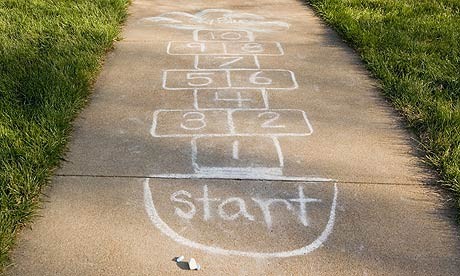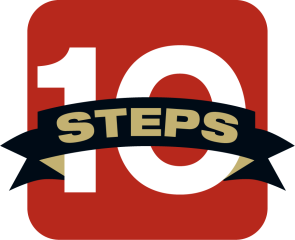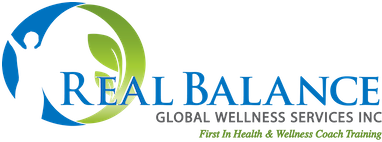Ten Steps To Structuring Great Wellness Coaching Sessions

Wellness coaching clients show up for appointments desiring to make progress in improving their lifestyles and thereby improving their lives. For as much as they want the session to be productive, it is easy for the client and the coach to drift together from topic to topic and finish up realizing that little has been accomplished. Sometimes a client comes to the session eager to talk about a particular subject, perhaps an emotion-laden one. Quickly the session’s minutes evaporate while little else is covered, including, perhaps, exactly what the client had originally hoped to work on. The Wellness Plan that the coach and client had developed gets pushed aside and soon the session is over. If this happens repetitively client dissatisfaction soars and soon coaching comes to a premature end.
Getting Started
Beginning coaches often feel awkward initiating the coaching conversation. Clients come through our door or arrive on the call sometimes unsure how to get started as well. A lesson from anthropology will tell us that social greeting behavior is expected, normal, and helps everyone relax. The old saying that "Bullshit is good fertilizer. Sometimes good things grow from it." is really saying that it's not only okay to exchange what we might call pleasantries, talk about the weather, etc., it grounds us in a more comfortable and familiar interaction from which to proceed.
“Structure Is Your Friend!”
While every coach is free to develop their own coaching style, and is probably a better coach because of that, consciously following a basic coaching structure will help insure that sessions are as productive as desired. Clients engage with coaches in order to accomplish what they have not been getting done in their lives. Much of the help that coaches provide is in helping clients to become better organized, to plan, to commit and to be accountable to themselves, thereby producing the results they want to see.
Being client-centered does not mean passively following the client in conversation wherever they may lead. It means facilitating the client’s own process, keeping them in the driver’s seat, but traveling down the road to where the client wants to go. The metaphor of the coach and client walking down a trail in the woods at midnight is a good one. It is the coach’s job to hold the flashlight and illuminate the way. It is the client’s job to choose the path.
Co-Creating The Agenda- Every Time![]()
Coaches help their clients to get clear about what they want to accomplish in coaching. They consciously co-create the coaching alliance. They hold the client’s agenda to be the agenda, but that does not mean starting a session with the often-disastrous invitation “So! What do you want to talk about today?” Make your coaching sessions more productive and satisfying by using the following steps as part of your coaching session structure.
 Ten Steps To Structuring Great Wellness Coaching Sessions
Ten Steps To Structuring Great Wellness Coaching Sessions
1. Preparation. Begin working on the session before it even happens. Have your client use a Coaching Session Prep Form to list their “wins”, address their commitments to action steps, and share what is important to process. Do your own homework on this client by reviewing notes, and getting mentally and physically prepared for the session.
2. Consciously Co-Create The Agenda for the session. Create an agreement about what will be worked on in this particular session. This should be relevant to the client’s overall Wellness Plan, or to the development of that plan. Following a map insures that we will get where we want to go.
3. Acknowledge and… When a client comes bursting through the door, so to speak, with an important issue to discuss handle it like this: A. Acknowledge their experience. B. Reflect their feelings about it. C. Emphasize the importance of being sure to talk about this issue today and ask what else the client wants to be sure to include in today’s agenda.
4. Dealing with crisis. Realize that when a client comes to the session in the midst of an immediate crisis that the empathic understanding and support of the coach may be all that “gets done” today, and that is totally okay. Create an agreement to just focus on helping them to express themselves about this issue and, perhaps do some immediate problem solving, such as helping them find additional resources to deal with the crisis (this could include referral to medical resources, mental health resources, or other possibilities).
5. Wins! Most sessions will progress from Co-Creating The Agenda, to checking in on what has gone well for the client since the last session. You may want to go over the Prep Form together. Looking at “wins” first is a positive psychology approach that coaching is famous for. It works! This moves along to checking in on progress and challenges regarding the action steps that the client had committed to working on during the last session.
6. Drawing out learning and processing. Explore the client’s experience with those action steps, with internal and external barriers that have come up. Coach for realization, insight and deeper understanding of self and environment. Connect with motivation. Coach for possibilities.
7. Next steps. Leave about one-third of the session available for “Where do we go from here?” Drawing upon what was gained in the session co-create next steps for the client to take in applying what they are learning. Look at previous commitments to Action Steps and either RECOMMIT (to the same Action Steps), RESET (adjust the Action Steps to a different level or threshold), or SHIFT (shift to new Action Steps). You may also want to co-create with the client an “inquiry” for them to work on in the coming week – something for them to think about, journal and/or converse about that is relevant to what came up in the session.
8. Review and agree. Summarize the essence of the session. Review exactly what the client’s understanding of the way forward is and agree upon specific Action Steps that the client is committing to. Reinforce the motivational connection between the Action Steps and how these actions will help the client achieve what they want in their Wellness Plan.
9. Wrap it up and close. Leave the client with inspiration, acknowledgement and clarity about the next meeting time.
10. Notes & Self-Care time. Finish up your notes, including notes about information you need to find (such as knowledge about a medication your client is taking) and any action steps that you have committed to doing. Then, take a little time for your own self-care, on a mental, emotional and/or physical level.
Students in our Advanced Wellness Coaching Competencies classes and our Mentor Coaching program have consistently remarked how implementing the co-creation of an agenda for the session (Step #2), has completely changed and improved how they coach with their clients. Step #3 has often helped them to stick to this structure while meeting the client where they needed to be met.
Structure often serves to paradoxically increase our freedom. Instead of wandering or even floundering on our coaching path, we find we cover more ground discover more along the way by having a map to follow.








Only registered and logged in readers can leave comments.